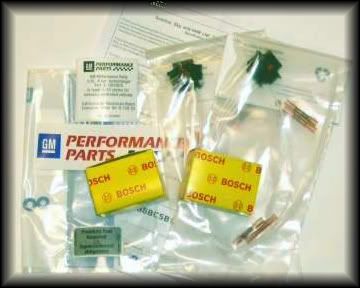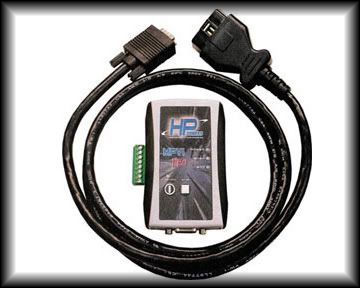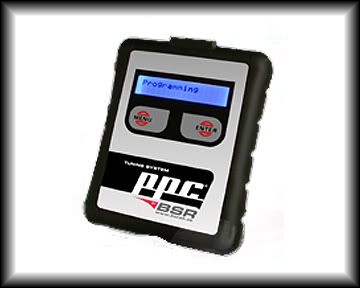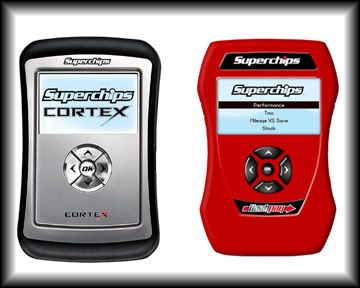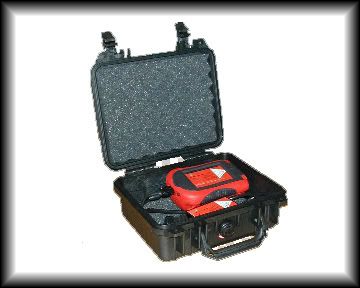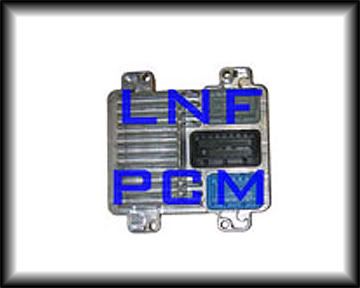cobalt123
Platinum Member
totally jacked this but i dont care 
It still needs alot of input from users on this site to make it a truly great thread. The purpose of this thread is to elaborate on how tuning an LNF is accomplished and the different tunes available for the LNF and not to teach you how to tune which BYT*SS*TURBO's thread does a great job of explaining the basics of (LNF Tuning Basics w/HPTuners - Cobalt SS Network). Wherever you see a question mark and you know the answer please let me know.
Basics of How a Tune Works on the LNF
written by Terminator2
The Gasoline Direct Injection (GDI) LNF uses a Bosch E69 GDI ECM. This ECM is a torque based engine controller containing approximately 2,500 tables that control all engine functions. There are approximately 600 tables that control fueling alone. A typical ECM contains only approx 250 tables total by contrast. A Gasoline Direct Injection (GDI) based fuel injection system is much harder to control and optimize than a typical Multiport EFI system which is why there are so many tables In the ECM that control fueling.
At the heart of this ECM is its torque based control system that uses driver input via pedal position to determine driver desired torque. Think of it as 100% pedal is equal to 100% driver desired torque. The driver desired torque value is fed into the Desired Airload table (DAL) which uses driver desired torque (pedal position) vs RPM to determine actual throttle postion. By raising or lower the DALs one can effect how the car reacts to pedal input from the driver. You can make 50% pedal 100% actual throttle opening or vise versa by raising or lowering those values. The DALs are regulated by the Maximum Airload Torque table (MALT) whch determines the percentage of actual airload allowed based on RPM. The Combination of the DAL and MALT helps determine actual throttle postion and does regulate the wastegate to some degree but does not allow for the desired boost level to be raised above 238 kPa, 34.5 psi absolute or 20 psi guage without modifying another table that we HP Tuners users do not yet have access to.
The GM stage tune rasies this desired boost ceiling to 285 kPa, 41.5 psi absolute or 27 psi gauge without raising the Desired airloads. The Superchips Tune also raises the desired boost levels without changing the desired airloads. Vince's infiniboost tune tricks the ECM into thinking it is seeing 238 kPa even though it may be seeing up to 300 kPa. We HP Tuners users have to runs external wastegate regulators or boost controllers to hold the boost levels above 20 psi until they decide to crack more of the ECM for us.
There is debate as to what is proper as far as what is Air to Fuel (A/F) mixture is appropriate for the LNF while in Power Enrichment Mode (PE) at Wide Open Throttle. PE ratios are expressed as Lambda where 1.00 Lambda = 14.69 A/F mixture when using gasoline. The Stock GM Tune and Stage one tune both use the same PE ratios of 0.95 to 0.87 lambda or 14.0 - 12.8 A/F. Most Trifecta tunes use 0.80 - 0.84 PE Lambda or 11.8 - 12.4 A/F. The Superchips tune uses uses 0.85 PE Lambda or 12.5 A/F. HP Tunes will vary according to who is doing the tuning. I have seen anywhere from 11.4 to 14.0 PE A/F used depending on the tuner. PE A/F is influenced by Power Enrichment VS Time which is better known by most as the catalyst overtemp protection table or COT Lambda table. After a certain time at WOT once the ECM models a catalyst temperature of 1700* the ECM will richen the A/F mixture to as rich as 0.711 Lambda or 10.45 A/F at WOT. Most change those values to match their PE Lambda Table or if they are catless they set all values to 1.00 lambda to disable the extra enrichment.
Ignition and cam timing is another aspect of tuning this ECM as the LNF has variable valve timing. The VVT is controled by cam phasers on each camshaft. The LNF has 4 sets of basic timing tables based on load, RPM, and Camshaft postion in relation to each cam's minimum and maximum states. Although there are more timing tables these are the main ones we are concerned with. Timing theories vary according to application but there is one universal truth. There is a point at which adding more ignition timing will actually cause torque and conversely HP loss. There is always a sweet spot where the mixture burns completely and just at the right time so that maximum cylinder pressure is reached right as the piston comes to Top Dead Center (TDC). That results in the the most work possible being performed on the piston (Large Force Acting on the piston for the most time possible) and hence the most torque output possible at that RPM. If the mixture burns too long from running too much ignition timing it will reach peak cylinder pressue well before TDC and the results will be spark knock and power loss, but if there is too little ignition timing run the mixture will not have sufficient time to burn completely and peak cylinder pressure will be reached after the piston passes TDC and the result will be less torque produced (Smaller Force acting on the piston for less time) The LNF is no different. It uses less WOT timing than any other engine I have ever seen partly do to the efficiency of the Direct Injection which produces much better fuel atomization and the comparatively lean mixtures GDI cars are known to run at WOT. Lean mixtures burn faster and hotter and require less timing because they burn quickly. Rich mixtures burn slower and at lower temperature and require more timing to burn completely.
There are over 20 camshaft tables but the only ones most would modify are the Intake Cam Main Warm table and the Exhaust Cam Main Warm Table. Many have wondered what the units in those tables are as they are undefined in HP Tuners. They are based on the camshaft's base circle. As I understand, the units influence how many degrees from center the camshaft is based on its base circle. So it is the camshaft itself that gives meaning to those units. That is why the values in the scanner are so much different than the values in the tables themselves and why it is possible to have a negative value in the table but a positive value in the scanner. Some have found small gains in top end HP by advancing the intake cam 2-3* in the upper RPM and upper load regions of that table. When you advance the intake or the exhaust cam you are asking it to open sooner. The throry behind a slight advance in intake cam timing is to open the intake valve a little sooner so the cylinder can take in more air. Exhaust cam tuning theory is the opposite principle. You want to leave the exhaust valve shut as long as possible so that maximum cylinder pressure is reached before the exhaust valve opens. The problem is if you wait too long to open the exhaust valve peak cylinder pressure already have been reached before the exhaust valve opens. That means either knock will ensue or the piston will already be past TDC and the ability to generate peak torque will be lost.
What is "Learn Down" and How Does it Work
written by Terminator2
The "Learn Down" feature. Because the LNF's ECM uses torque based controls it is much more advanced as far as limiting or adding to the torque that is desired from it. All modern ECMs that I have seen have Torque Management (TM) tables, and the LNF is no exception, but its entire engine management system is built around Driver Desired Torque vs Actual Torque Output. Driver desired torque is based on Pedal Position, RPM, Desired Airload, and Maximum Airload Torque. Those values determine Optimum Engine Torque which calculates engine torque output based on 1.00 Lambda. The Lambda Efficiency table changes calculated engine torque based on A/F Ratio expressed as Lambda. Leaner than 1.00 Lambda will produce less actual torque, and richer than 1.00 Lambda (up to a point) will produce more actual torque output. The "Learn Down" that most notice occurs when adding mods or driving in very cold weather they notice the boost pressure values have gone down. The ECMs torque based controls are to blame for this. If breathing efficiency is increased either from adding mods or from a denser air charge the ECM compensates for this by decreasing its Desired Boost pressure values. It does so because Actual Torque Output is modeled as greater than Desired Torque output. The GM Stage 1 tune raises the Desired Boost and Actual Torque output levels but does NOT completely remove the learn down but it does raise it. Other Tunes work the same way. They do not completely remove the learn down they merely raise it to a level that the car cannot acheive in the first place. Think of the learn down more like a target airload level or target torque output level. If you add mods or change the charge air density the ECM will sense that it is reaching its target torque output much more easily than before. That is not to say that adding mods without a tune will produce no gains at all. It is possible when adding mods like a catless DP and an Intake to make more power than stock even without being retuned. Although the gains are much larger if you retune the car I have seen evidence that even thousands of miles after adding mods a car will still dyno higher than stock. I have seen a stock tune LNF with an Intake and Catless DP make 254 whp and 272 wrtq thousands of miles after first adding the mods. That car stock on that same dyno would make closer to 240 whp and 250 wrtq.

It still needs alot of input from users on this site to make it a truly great thread. The purpose of this thread is to elaborate on how tuning an LNF is accomplished and the different tunes available for the LNF and not to teach you how to tune which BYT*SS*TURBO's thread does a great job of explaining the basics of (LNF Tuning Basics w/HPTuners - Cobalt SS Network). Wherever you see a question mark and you know the answer please let me know.
Basics of How a Tune Works on the LNF
written by Terminator2
The Gasoline Direct Injection (GDI) LNF uses a Bosch E69 GDI ECM. This ECM is a torque based engine controller containing approximately 2,500 tables that control all engine functions. There are approximately 600 tables that control fueling alone. A typical ECM contains only approx 250 tables total by contrast. A Gasoline Direct Injection (GDI) based fuel injection system is much harder to control and optimize than a typical Multiport EFI system which is why there are so many tables In the ECM that control fueling.
At the heart of this ECM is its torque based control system that uses driver input via pedal position to determine driver desired torque. Think of it as 100% pedal is equal to 100% driver desired torque. The driver desired torque value is fed into the Desired Airload table (DAL) which uses driver desired torque (pedal position) vs RPM to determine actual throttle postion. By raising or lower the DALs one can effect how the car reacts to pedal input from the driver. You can make 50% pedal 100% actual throttle opening or vise versa by raising or lowering those values. The DALs are regulated by the Maximum Airload Torque table (MALT) whch determines the percentage of actual airload allowed based on RPM. The Combination of the DAL and MALT helps determine actual throttle postion and does regulate the wastegate to some degree but does not allow for the desired boost level to be raised above 238 kPa, 34.5 psi absolute or 20 psi guage without modifying another table that we HP Tuners users do not yet have access to.
The GM stage tune rasies this desired boost ceiling to 285 kPa, 41.5 psi absolute or 27 psi gauge without raising the Desired airloads. The Superchips Tune also raises the desired boost levels without changing the desired airloads. Vince's infiniboost tune tricks the ECM into thinking it is seeing 238 kPa even though it may be seeing up to 300 kPa. We HP Tuners users have to runs external wastegate regulators or boost controllers to hold the boost levels above 20 psi until they decide to crack more of the ECM for us.
There is debate as to what is proper as far as what is Air to Fuel (A/F) mixture is appropriate for the LNF while in Power Enrichment Mode (PE) at Wide Open Throttle. PE ratios are expressed as Lambda where 1.00 Lambda = 14.69 A/F mixture when using gasoline. The Stock GM Tune and Stage one tune both use the same PE ratios of 0.95 to 0.87 lambda or 14.0 - 12.8 A/F. Most Trifecta tunes use 0.80 - 0.84 PE Lambda or 11.8 - 12.4 A/F. The Superchips tune uses uses 0.85 PE Lambda or 12.5 A/F. HP Tunes will vary according to who is doing the tuning. I have seen anywhere from 11.4 to 14.0 PE A/F used depending on the tuner. PE A/F is influenced by Power Enrichment VS Time which is better known by most as the catalyst overtemp protection table or COT Lambda table. After a certain time at WOT once the ECM models a catalyst temperature of 1700* the ECM will richen the A/F mixture to as rich as 0.711 Lambda or 10.45 A/F at WOT. Most change those values to match their PE Lambda Table or if they are catless they set all values to 1.00 lambda to disable the extra enrichment.
Ignition and cam timing is another aspect of tuning this ECM as the LNF has variable valve timing. The VVT is controled by cam phasers on each camshaft. The LNF has 4 sets of basic timing tables based on load, RPM, and Camshaft postion in relation to each cam's minimum and maximum states. Although there are more timing tables these are the main ones we are concerned with. Timing theories vary according to application but there is one universal truth. There is a point at which adding more ignition timing will actually cause torque and conversely HP loss. There is always a sweet spot where the mixture burns completely and just at the right time so that maximum cylinder pressure is reached right as the piston comes to Top Dead Center (TDC). That results in the the most work possible being performed on the piston (Large Force Acting on the piston for the most time possible) and hence the most torque output possible at that RPM. If the mixture burns too long from running too much ignition timing it will reach peak cylinder pressue well before TDC and the results will be spark knock and power loss, but if there is too little ignition timing run the mixture will not have sufficient time to burn completely and peak cylinder pressure will be reached after the piston passes TDC and the result will be less torque produced (Smaller Force acting on the piston for less time) The LNF is no different. It uses less WOT timing than any other engine I have ever seen partly do to the efficiency of the Direct Injection which produces much better fuel atomization and the comparatively lean mixtures GDI cars are known to run at WOT. Lean mixtures burn faster and hotter and require less timing because they burn quickly. Rich mixtures burn slower and at lower temperature and require more timing to burn completely.
There are over 20 camshaft tables but the only ones most would modify are the Intake Cam Main Warm table and the Exhaust Cam Main Warm Table. Many have wondered what the units in those tables are as they are undefined in HP Tuners. They are based on the camshaft's base circle. As I understand, the units influence how many degrees from center the camshaft is based on its base circle. So it is the camshaft itself that gives meaning to those units. That is why the values in the scanner are so much different than the values in the tables themselves and why it is possible to have a negative value in the table but a positive value in the scanner. Some have found small gains in top end HP by advancing the intake cam 2-3* in the upper RPM and upper load regions of that table. When you advance the intake or the exhaust cam you are asking it to open sooner. The throry behind a slight advance in intake cam timing is to open the intake valve a little sooner so the cylinder can take in more air. Exhaust cam tuning theory is the opposite principle. You want to leave the exhaust valve shut as long as possible so that maximum cylinder pressure is reached before the exhaust valve opens. The problem is if you wait too long to open the exhaust valve peak cylinder pressure already have been reached before the exhaust valve opens. That means either knock will ensue or the piston will already be past TDC and the ability to generate peak torque will be lost.
What is "Learn Down" and How Does it Work
written by Terminator2
The "Learn Down" feature. Because the LNF's ECM uses torque based controls it is much more advanced as far as limiting or adding to the torque that is desired from it. All modern ECMs that I have seen have Torque Management (TM) tables, and the LNF is no exception, but its entire engine management system is built around Driver Desired Torque vs Actual Torque Output. Driver desired torque is based on Pedal Position, RPM, Desired Airload, and Maximum Airload Torque. Those values determine Optimum Engine Torque which calculates engine torque output based on 1.00 Lambda. The Lambda Efficiency table changes calculated engine torque based on A/F Ratio expressed as Lambda. Leaner than 1.00 Lambda will produce less actual torque, and richer than 1.00 Lambda (up to a point) will produce more actual torque output. The "Learn Down" that most notice occurs when adding mods or driving in very cold weather they notice the boost pressure values have gone down. The ECMs torque based controls are to blame for this. If breathing efficiency is increased either from adding mods or from a denser air charge the ECM compensates for this by decreasing its Desired Boost pressure values. It does so because Actual Torque Output is modeled as greater than Desired Torque output. The GM Stage 1 tune raises the Desired Boost and Actual Torque output levels but does NOT completely remove the learn down but it does raise it. Other Tunes work the same way. They do not completely remove the learn down they merely raise it to a level that the car cannot acheive in the first place. Think of the learn down more like a target airload level or target torque output level. If you add mods or change the charge air density the ECM will sense that it is reaching its target torque output much more easily than before. That is not to say that adding mods without a tune will produce no gains at all. It is possible when adding mods like a catless DP and an Intake to make more power than stock even without being retuned. Although the gains are much larger if you retune the car I have seen evidence that even thousands of miles after adding mods a car will still dyno higher than stock. I have seen a stock tune LNF with an Intake and Catless DP make 254 whp and 272 wrtq thousands of miles after first adding the mods. That car stock on that same dyno would make closer to 240 whp and 250 wrtq.


